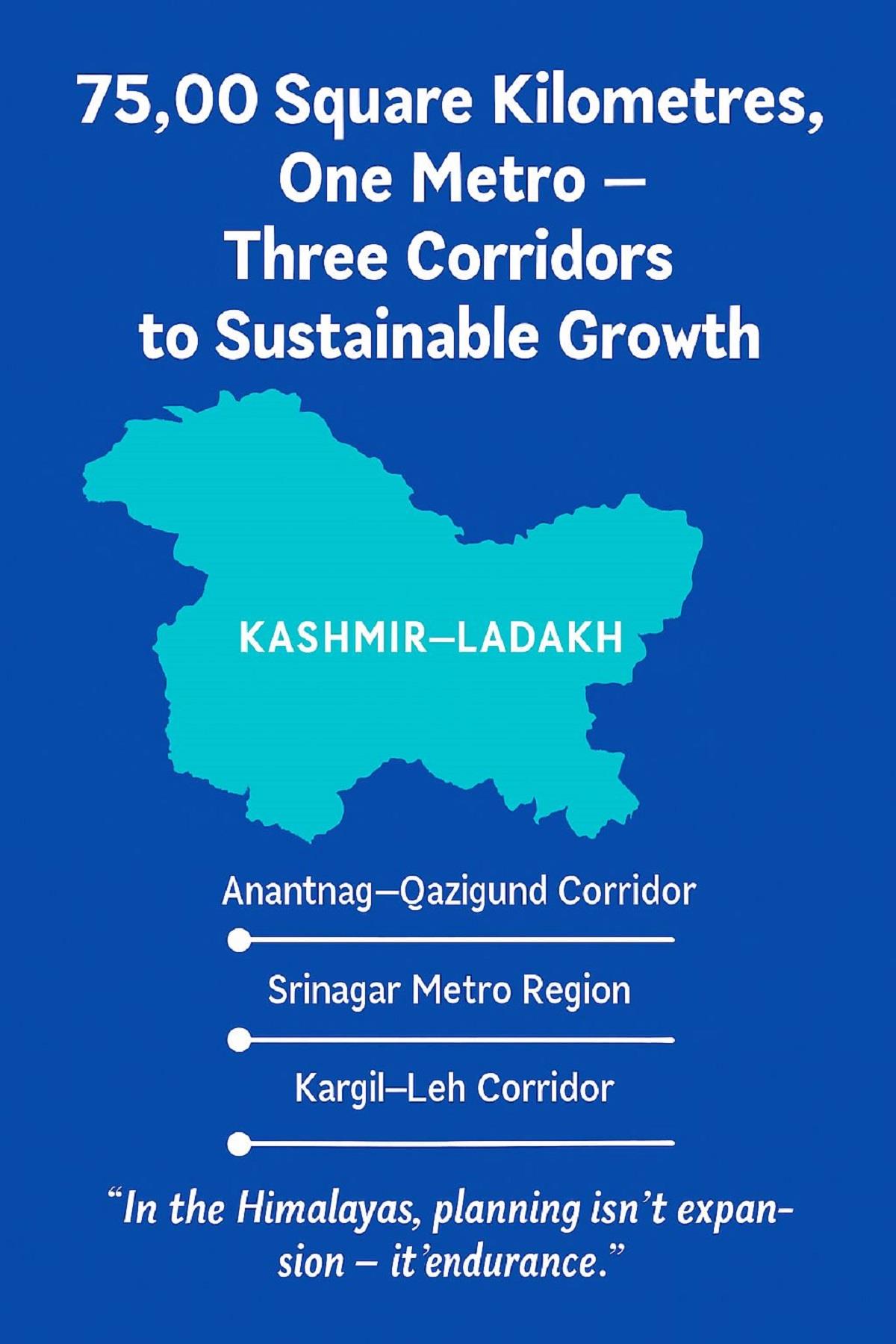
The Himalayan Blueprint: Why Kashmir And Ladakh Must Grow Together
Representational photo
By Sandeep Kotwal
Imagine seeing Kashmir and Ladakh as a single region, a vast stretch of nearly 75,000 square kilometres. By size, it could fit around 150 full-scale cities, each sprawling over 500 square kilometres. In reality, there's only one major urban center, Srinagar, and roughly eight million people living across valleys, plateaus, and rugged mountains that shape daily life far more than any city ever could.
This contrast between scale and settlement reveals something important: the Himalayas ask for better planning.
And that planning must emerge from the understanding that mountains thrive on balance, not expansion.
Seen through a planner's eyes, the two territories, Kashmir and Ladakh, are not separate worlds but parts of one natural macroregion. They share rivers, trade routes, and ecological systems that have connected communities for centuries.
Kashmir provides population, water, and resources, while Ladakh contributes space, sunlight, and energy potential.
Together, they form a complementary whole that could become India's model for sustainable mountain development.
The idea is to realign mindsets.
If the Himalayas are to endure, they need a framework that combines their cultural diversity with environmental logic. This vision could take shape through three interconnected development corridors, each grounded in local geography and livelihood.
The first is the Anantnag-Qazigund Corridor, the southern stretch of Kashmir. It holds fertile soil, abundant water, and a direct link to the national highway. This belt can evolve into an agro-industrial powerhouse where apple, walnut, and saffron growers find modern processing units, cold-chain logistics, and export hubs powered by renewable energy.
Solar-driven food parks and rural skill centres could connect traditional agriculture with 21st-century value chains.
This is where the valley's economic backbone can strengthen without losing its soul.
The second is the Srinagar Metropolitan Region, the cultural and administrative heart of the Himalayas.
Srinagar must grow vertically and intelligently, not outward into wetlands and farmland. The future city should breathe through clean mobility, smart water systems, and digital governance. It can become a knowledge capital linking education, tourism, and creative industries.
When planned well, Srinagar can offer lessons to other mountain capitals on how to balance growth with geography, a compact city that learns from its lake rather than chokes it.
The third is the Kargil-Leh Corridor, the energy and strategic frontier of India's northern edge.
Ladakh's high plateau is already known for its renewable potential, nearly 60,000 MW of solar energy, 1,500 MW of hydro, and immense promise for green hydrogen.
A corridor here can blend clean energy clusters with defence logistics, tourism circuits, and cold-climate research.
This would transform Kargil-Leh from a border zone into a self-sustaining hub that powers much of northern India while preserving its fragile ecology.
All three corridors reflect a simple principle: growth aligned with terrain.

Legal Disclaimer:
MENAFN provides the
information “as is” without warranty of any kind. We do not accept
any responsibility or liability for the accuracy, content, images,
videos, licenses, completeness, legality, or reliability of the information
contained in this article. If you have any complaints or copyright
issues related to this article, kindly contact the provider above.
Most popular stories
Market Research

- Crypto Market Update: Pepeto Advances Presale With Staking Rewards And Live Exchange Demo
- Kucoin Appeals FINTRAC Decision, Reaffirms Commitment To Compliance
- Cregis And Sumsub Host Web3 Compliance And Trust Summit In Singapore
- Chartis Research And Metrika Release Comprehensive Framework For Managing Digital Asset Risk
- Nodepay Launches Crypto's Largest Prediction Intelligence Platform
- Schoenherr Opens London Liaison Office As Gateway To Central Eastern Europe




















Comments
No comment